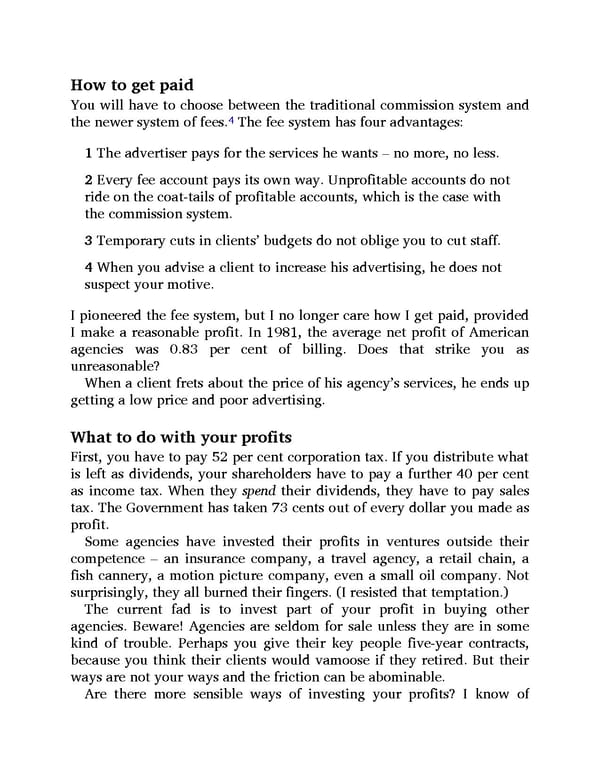How to get paid You will have to choose between the traditional commission system and 4 the newer system of fees. The fee system has four advantages: 1 The advertiser pays for the services he wants – no more, no less. 2 Every fee account pays its own way. Unprofitable accounts do not ride on the coat-tails of profitable accounts, which is the case with the commission system. 3 Temporary cuts in clients’ budgets do not oblige you to cut staff. 4 When you advise a client to increase his advertising, he does not suspect your motive. I pioneered the fee system, but I no longer care how I get paid, provided I make a reasonable profit. In 1981, the average net profit of American agencies was 0.83 per cent of billing. Does that strike you as unreasonable? When a client frets about the price of his agency’s services, he ends up getting a low price and poor advertising. What to do with your profits First, you have to pay 52 per cent corporation tax. If you distribute what is left as dividends, your shareholders have to pay a further 40 per cent as income tax. When they spend their dividends, they have to pay sales tax. The Government has taken 73 cents out of every dollar you made as profit. Some agencies have invested their profits in ventures outside their competence – an insurance company, a travel agency, a retail chain, a fish cannery, a motion picture company, even a small oil company. Not surprisingly, they all burned their fingers. (I resisted that temptation.) The current fad is to invest part of your profit in buying other agencies. Beware! Agencies are seldom for sale unless they are in some kind of trouble. Perhaps you give their key people five-year contracts, because you think their clients would vamoose if they retired. But their ways are not your ways and the friction can be abominable. Are there more sensible ways of investing your profits? I know of
 Ogilvy on Advertising Page 78 Page 80
Ogilvy on Advertising Page 78 Page 80